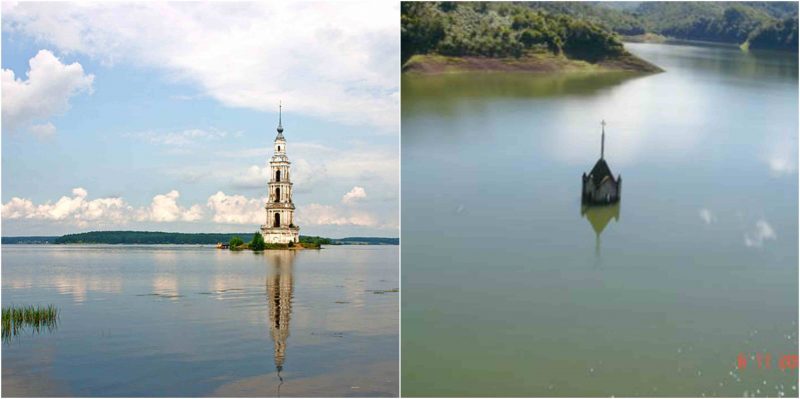There have been many popular and commonly heard stories over time about how grave natural disasters have caused death and destruction to towns or entire villages.
It seems almost a part of nature that some areas are just not meant to last for as long as others. When there is some natural event that the area and the people of that area just simply cannot survive this can be an incredibly sad thing to think about, because it can mean the end of a culture from the destruction of what was once a home to many people. However interestingly, at times some beautiful sights can come about due to these grave natural disasters. These five towers are some of the most stunning sights to behold, even though they came about as a result of mass flooding, which many times was created purposefully in order to create a dam system.
5. Potosi in Venezuela
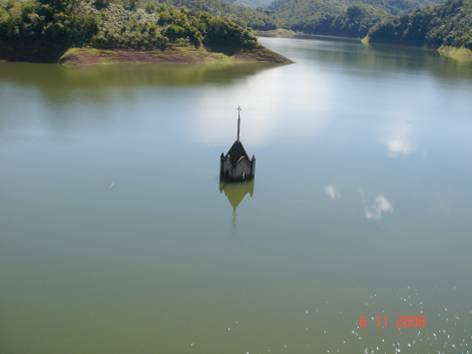
Before a flood in 1985 wiped out a town called Potosi in Venezuela, the population of the town was inhabited by nearly one thousand two hundred citizens. At the time the president of Venezuela was Carlos Andres Perez and he had the job of issuing the dire warning that all of the people who were living had to evacuate. The town was going to be purposefully flooded so that a hydroelectric dam could be built.
The town spent about twenty-six years under water before a drought caused a thirty-meter drop in the level of the water in the reservoir. Several landmarks of the town have started to reemerge, such as the church, grave markers, ruins of old houses, as well as the beloved town square. These emerging remains have attracted visitors to the town wanting to witness the sites. Allegedly, the El Nino weather (a sporadically occurring and complex series of climatic changes affecting the equatorial Pacific region and beyond every few year) in 2009 and 2010 was the main cause of the drought that made more of the town visible.
4. Kalyazin Bell Tower, Russia
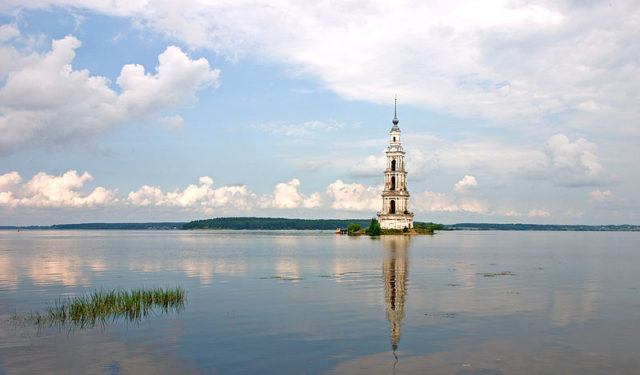
In 1939 Joseph Stalin, the then leader of Russia, ordered the beginning of the construction of the Uglich Dam in order to create the Uglich reservoir. As a result, an old part of Kalyazin, which also included medieval structures, was buried beneath the water.
Some of these medieval structures have stood the test of time and human intervention, as the once beautiful landmarks can still be seen standing above the surface of the water. This is a truly amazing sight to behold as the top of the submerged building yields a new form of beauty.
3. The church of Sant Romà, Spain
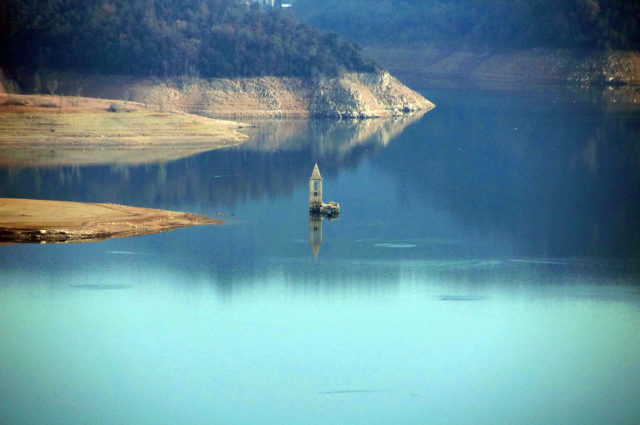
In Spain, there is a church called the Church of Sant Roma, which is a church that is located in a village that now lies beneath the waters of the Sau dam. This is something that is more visible when the water is low, and looks spectacular surrounded by the water, revealing a part of the story of what once existed there.
2. Church of Mediano, Spain
Another building that is also visible despite being flooded and surrounded on all sides by water, is the Church of Mediano.
The Church of Mediano is a church that was built in the sixteenth century and it is located in a now-submerged city of La Fueva in Spain.
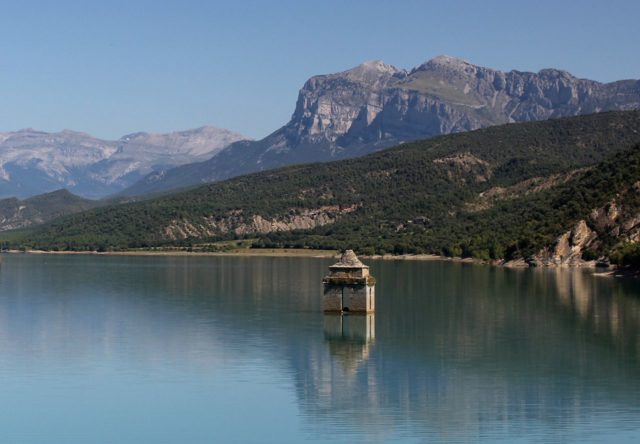
The church was flooded in 1974 as a means to create the Mediano Reservoir.
1. The 14th-century church bell tower stands with the peaks in Lake Reschen, Italy
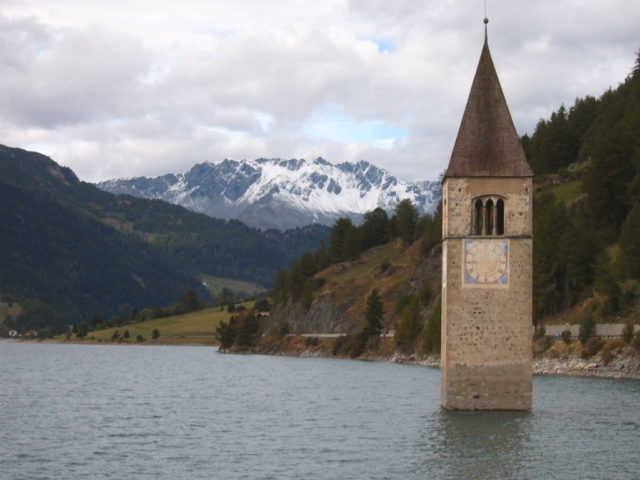
Lake Reschen is a man-made lake in South Tyrol, Italy. It lies about two kilometers south of the Reschen pass, the border between Austria and Switzerland.
This is the largest lake in the province, having the ability to hold about one hundred and twenty million cubic meters of water. The surface area of the lake is about 6.6 kilometers squared. This lake receives water from the Adige, Rojenbach, and Karlinbach, and is drained by the Adige.
While all of this information in itself may lead one to believe that its sheer size and volume is notable enough, that is not the most compelling part. The lake acquires a lot of its notoriety for having a steeple within it that is a part of a submerged church from the fourteenth century. What is also amazing about this steeple is that when the water is frozen during the colder times of the year, a person can walk right up to it and touch it. There are also some legends surrounding this steeple, as some say that the bells can still be heard ringing during the winter time. Adding mystery to this legend is that the bells were removed from the tower in the summer of 1950 so that the church could be destroyed in order to help create the man-made lake.
Most of the time when people view churches or old towns, they are on land and have the ability to walk all around, but with these wonders that is not the case. It is not often that a person has the ability to see historic structures mostly submerged and surrounded by water. That is what makes it all truly unique and remarkable and something that people like to view, whether it be just on the internet or going there in person.
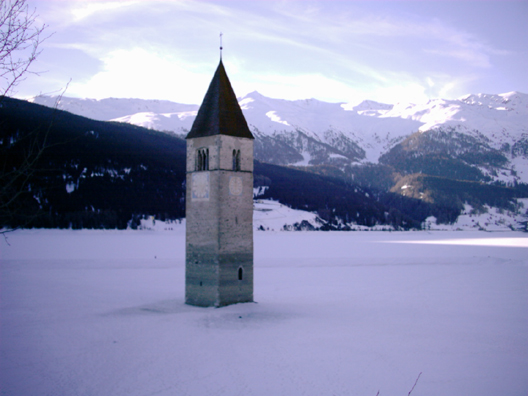
For some people these sites, affected by the construction of dams and reservoirs, or by the event of a flood, create feelings of nostalgia because they have been places where they once visited and knew, or perhaps even once lived.
The beauty of these peaking buildings, however, show that despite these natural and man-made devastations, a kind of perseverance and transformation can be seen through the changes that happen all around them.
